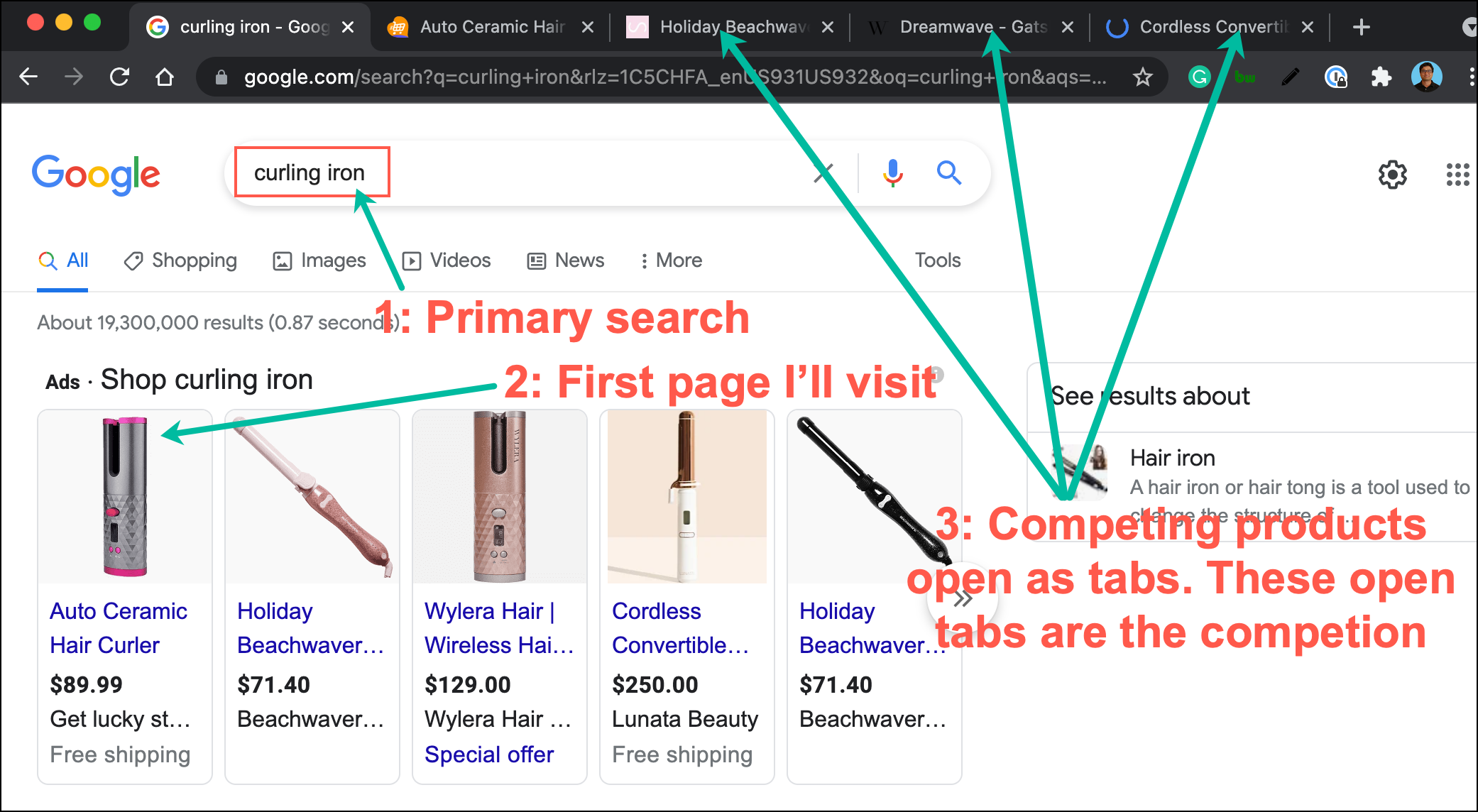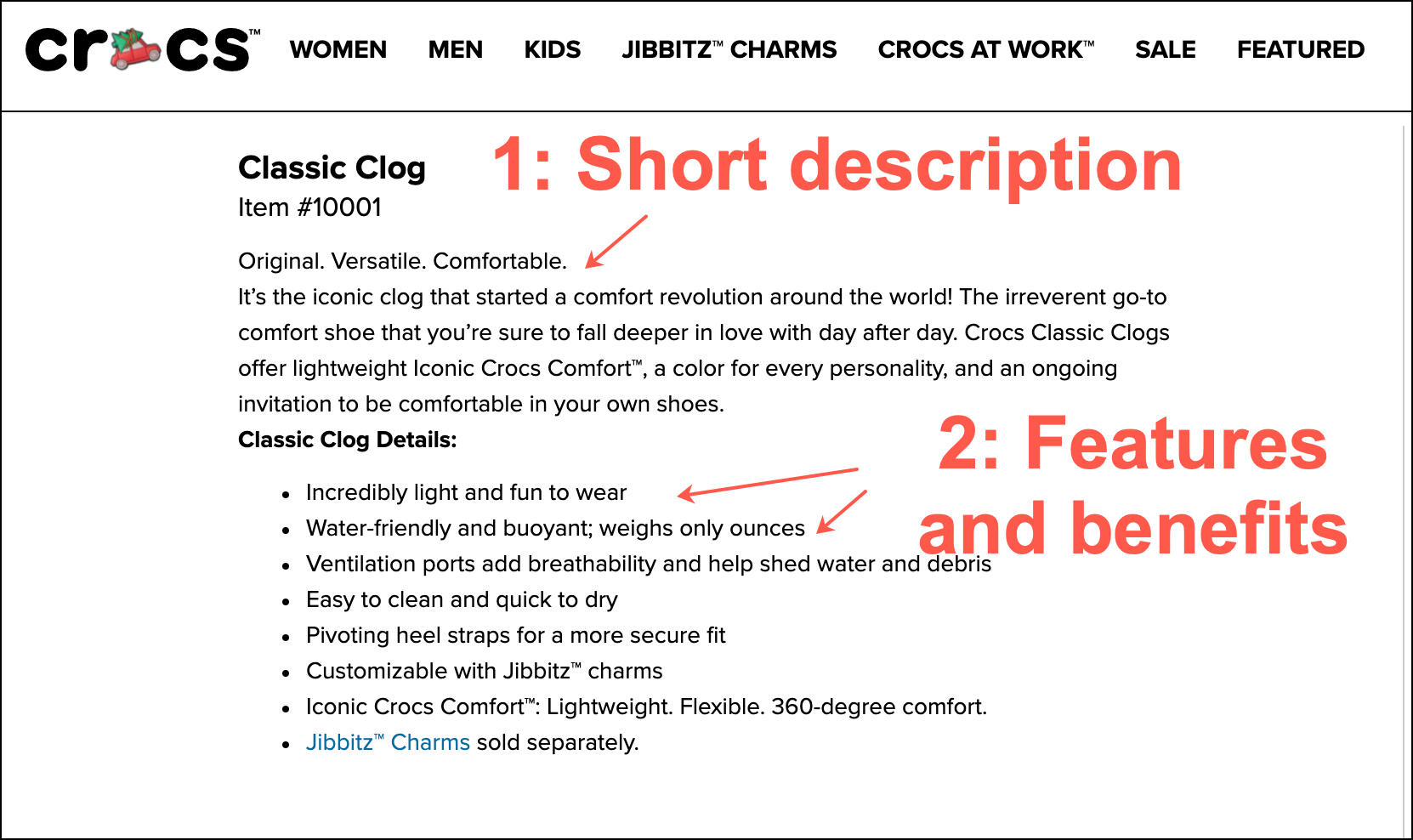Blog
How to Write a Good Product Description
As far as I’m concerned there are few marketing questions more important than How to Write a Good Product Description. I have a damn good reason for saying this. Read on.
I can say this because we have been doing marketing optimization for direct-to-consumer (DTC) brands for the last 13 years. Of all the things that we’ve discovered the one element that has the biggest impact on conversion rates is the product description. And if the focus is on the proper description then one has to nail the question of how to write a good product description.
Dollars and Cents
Our focus on crafting the best part description has nothing to do with aesthetics and everything to do with economics. You’ve spent serious money & time developing your breakthrough invention. On top of that, you’ve invested in online advertising to attract the right audience to your site. Most likely, you are investing in Google ads Facebook ads, and maybe even some Instagram ads.
Spending on advertising is no small deal. Direct-to-consumer (DTC) brands spend hundreds of thousands of dollars to pull in new prospects to their sites. To complicate things further we are currently living in a period of frothy optimism, which means brands are spending waymore than the normal on advertising.
Sea a Choice
Over the last 30 years, the power dynamics between brands and consumers have shifted. 30 years ago we had a few brands and the buyer would need to pick from those limited options. Today, the consumer has infinite choices.
Did you know 30,000 new products are released every year? (Source)

And because of this list of seemingly infinite choices, buyers have been trained to Exit sites the moment they encounter any form of frustration or confusion.
How the New Visitor Sees Your Site
The user sees your ad and clicks it. I’m betting your ad directly connects to your best-selling product page (PDP). You wouldn’t be wrong in thinking this new visitor would land on the PDP, and from there they may navigate to the homepage, and from there go to the About Us page to learn more about your business
The reality is that the user comes to the product page, spends five seconds, and if in those five seconds they conclude that your product isn’t exactly what they were looking for they leave and visit one of the five other competitor side tabs they have open.

How a consumer determines a product designed to solve their problem isn’t a fit within five seconds is something I’ll never fully understand. What I can do is confront reality.
Google Analytics data is very clear on this: shoppers quit websites ridiculous fast.
Product descriptions have the following typical characteristics:
1: They are short and to the point.
2: They focus on features and benefits.

How to Write a Good Product Description
The secret to writing a good description that massively improves conversions is to present a product story.
A product story is a special type of story that’s designed to connect with visitors and make them fall in love with your creation. The job of the product story is to educate and convert new visitors.
When the user first lands they don’t really know all the details about our product and what it does. To complicate things, different visitors have different awareness levels. Some may be quite familiar with the problem your product solves, some may have an existing product (and are looking to find a better replacement), but there might also be visitors who have just started their search.
The list
Your product story is designed to satisfy the four stages of buying:
1— Awareness: here we are educating our cold traffic on the wonderful things that our product is able to do.
2— Interest: next, we need to construct a story such that it slows the user down and gets them interested in what we have to say. When the visitor first visits they have multiple browser tabs open. Each of these tabs has competing products. Therefore as a conversion copywriter, my job is to construct a story in a way so that this visitor ignores those other open tabs. Those tabs are my enemy.
3— Desire: you get a user from being interested in pulling out their credit card we need to significantly increase their level of desire. And in order to amplify desire, we must first understand the psychology of the buyer we are dealing with. This is where our 9-point buyer psychology conversion copywriting framework comes into play. To learn all about our process read this marketing secrets article.
4— Action: telling a compelling product story isn’t enough if we don’t give the buyer clear instructions on how they can go from having discovered as to actually enjoying the benefits of what our product is able to give. Just having a BUY NOW button isn’t enough.
Revealing It All
We hope you liked this article about how to write a good product description.
We have so much more to share with you.
Why Listen to Us?
We’ve spent the last 14 years in our marketing lab 🧑🔬 🧪, experimenting on online shoppers. We’ve learned a crap ton and are ready to share those learning.
We want more marketers and CEOs to know about it.
Eventually, we’ll make this into a book. If you want an unfair advantage over competitors now is the time to steal our ideas because once they are published the cat will be out of the bag.
Each chapter in our forthcoming book will feed into the next. Click the link that best describes where you want to start the story:
Chapter 1: is all about conversation rate optimization (CRO). It talks about the history of CRO, statistics of CRO, and describes how most agencies do CRO. We need to describe how most are doing it before revealing our process (that’s the topic of Chapter 4.)
Chapter 2: For every 1,000 product pitches encountered the shopper buys 1️⃣ item (and we’re being generous). If the goal is to have the consumer choose your product we need to understand their selection criteria– we need to understand their buyer psychology. Marketers who nail this will always outrun their peers.
Chapter 3: Conversion optimization work typically focuses on design and layout changes. We don’t limit ourselves to design and layout. Through extensive experimentation, we realized that the thing that moves the conversion needle 🧭 are the words and ideas expressed on the page. Conversion copywriting is where it’s at.
Chapter 4: Marketers make a fatal mistake. They focus on optimizing the whole site. We focus on the tip of the spear. The most important page on your entire site is your product page. To understand why this is, read this post: Product Page Optimization.



